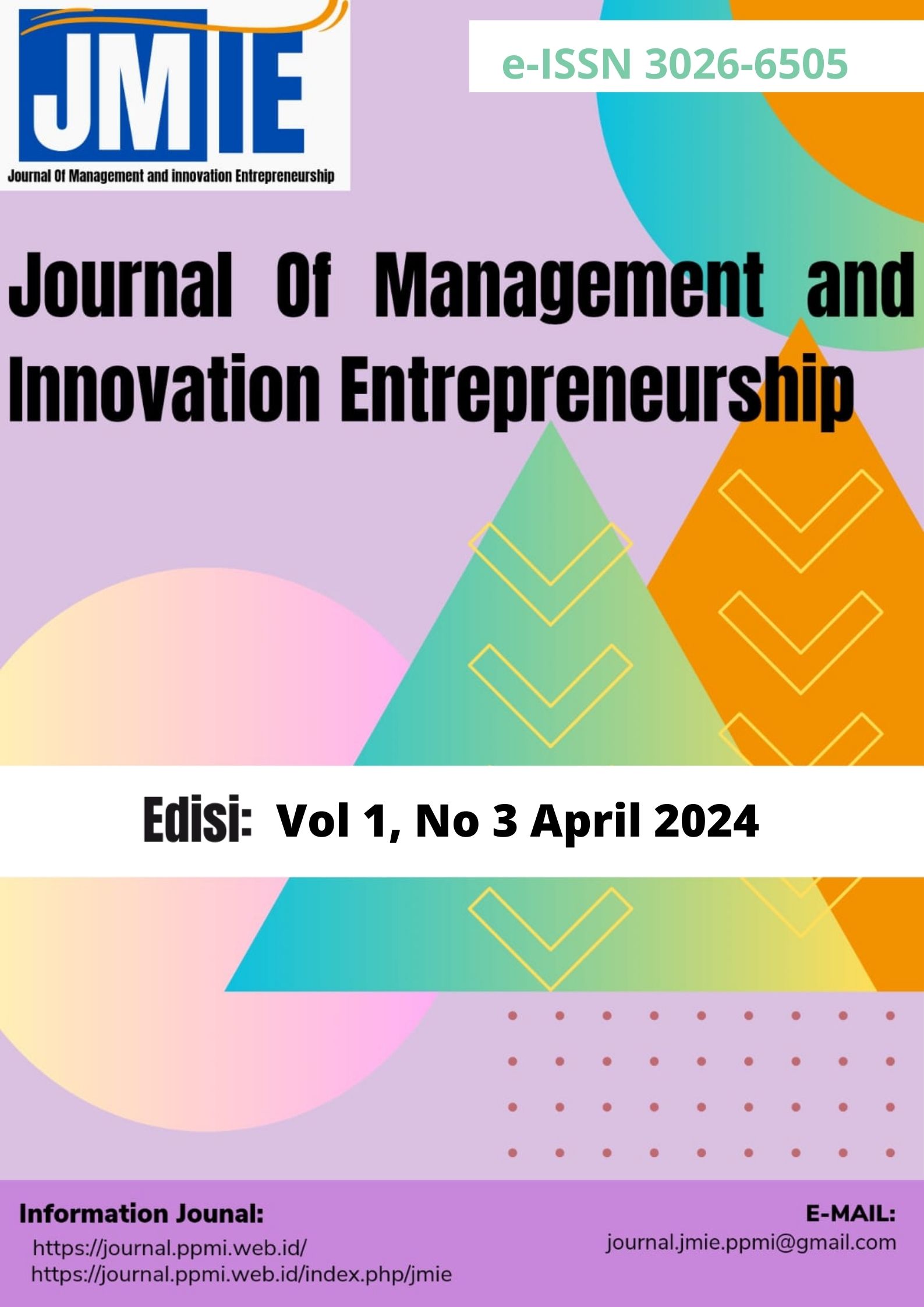DAMPAK PENERAPAN SERVANT LEADERSHIP DI INSTITUSI PENDIDIKAN TINGGI: SEBUAH TINJAUAN LITERATUR
DOI:
https://doi.org/10.59407/jmie.v1i3.671Keywords:
Servant leadership, higher education, employee engagement, job satisfaction, organizational commitment, student outcomes, collaboration, empowerment, trust, academic achievement.Abstract
This literature review examines the impact of servant leadership implementation in higher education institutions. Through a synthesis of existing research, it identifies the benefits, challenges, and outcomes associated with servant leadership practices in academia. The review highlights how servant leadership fosters collaboration, empowerment, and trust among faculty, staff, and students, leading to improved communication, engagement, motivation, and community within institutions. It also underscores the positive correlation between servant leadership behaviors and employee engagement, job satisfaction, and organizational commitment. Additionally, the review emphasizes the impact of servant leadership on student learning outcomes, including academic achievement, engagement, retention, and satisfaction. Scholars are increasingly focusing on developing servant leadership competencies among academic administrators and faculty and conducting longitudinal studies to assess long-term effects and best practices. Overall, the findings underscore the significant impact of servant leadership on higher education quality and organizational success, emphasizing the need to integrate servant leadership principles into leadership practices within higher education institutions. Further research in this area can provide deeper insights into effective servant leadership practices and their practical implications in higher education.
References
K. F. Latif, “Servant Leadership, Career, and Life Satisfaction in Higher Education: a Cross-Country Study of Spain, China, and Pakistan,” Appl. Res. Qual. Life, vol. 16, no. 3, pp. 1221–1247, 2021, doi: 10.1007/s11482-019-09809-x.
F. A. Gonaim, “Leadership in higher education in Saudi Arabia: Benefits, constraints and challenges of adopting servant leadership model by department chairs,” Int. J. Educ. Pract., vol. 7, no. 2, pp. 101–111, 2019, doi: 10.18488/journal.61.2019.72.101.111.
R. K. Greenleaf, The power of servant-leadership. Berrett-Koehler Publishers, 1998.
A. Gregory Stone, R. F. Russell, and K. Patterson, “Transformational versus servant leadership: A difference in leader focus,” Leadersh. Organ. Dev. J., vol. 25, no. 4, pp. 349–361, 2004.
L. C. Spears and F. Wagner-Marsh, “Insights on leadership: Service, stewardship, spirit, and servant-leadership,” 1998.
R. C. Liden, S. J. Wayne, H. Zhao, and D. Henderson, “Servant leadership: Development of a multidimensional measure and multi-level assessment,” Leadersh. Q., vol. 19, no. 2, pp. 161–177, 2008.
J. Azzaini and A. R. Aryanto, Leadership Inspirations: Tips dan Trik Menjalankan Strategi Kepemimpinan yang Efektif. Gramedia Pustaka Utama, 2024.
A. Al-Asfour, “Servant leadership behaviors and the level of readiness to covid-19 pandemic: evidence from USA higher education institutions,” Int. J. Leadersh. Educ., 2022, doi: 10.1080/13603124.2022.2108505.
A. A. Sihombing, “Examining the Relationship between Servant Leadership, Organizational Commitment, and Task Performance of Lecturers around Religious Colleges,” Int. J. Educ. Organ. Leadersh., vol. 31, no. 1, pp. 23–46, 2024, doi: 10.18848/2329-1656/CGP/v31i01/23-46.
A. Nawaz, “Driving innovation through servant leadership in higher education: Unveiling the serial mediating mechanisms of subjective well-being and knowledge sharing,” Knowl. Process Manag., vol. 31, no. 1, pp. 3–16, 2024, doi: 10.1002/kpm.1761.
A. M. Asfahani, “Green HRM and Servant Leadership: Driving Competitive Advantage and Environmental Performance in Higher Education,” Sustain., vol. 15, no. 10, 2023, doi: 10.3390/su15107921.
R. Alonderiene, “Leadership style and job satisfaction in higher education institutions,” Int. J. Educ. Manag., vol. 30, no. 1, pp. 140–164, 2016, doi: 10.1108/IJEM-08-2014-0106.
K. Dahleez, “Servant leadership and job satisfaction in higher education: the mediating roles of organizational justice and organizational trust,” Int. J. Leadersh. Educ., 2022, doi: 10.1080/13603124.2022.2052753.
J. R. Hanaysha, “Direct and indirect effects of servant and ethical leadership styles on employee creativity: mediating role of organizational citizenship behavior,” Arab Gulf J. Sci. Res., vol. 40, no. 1, pp. 79–98, 2022, doi: 10.1108/AGJSR-04-2022-0033.
D. E. Murphy, “The Relationship Between Servant Leadership and Teacher Retention and Student Achievement,” 2020.
R. Dodd, R. M. Achen, and A. Lumpkin, “Servant leadership and its impact on ethical climate,” J. Values-Based Leadersh., vol. 11, no. 1, p. 11, 2018.
D. B. Ross, “A remedy for improving the culture in higher education: Toxic leadership to servant leadership,” Confronting academic mobbing in higher education: Personal accounts and administrative action. pp. 159–185, 2019, doi: 10.4018/978-1-5225-9485-7.ch007.
A. Mussagulova, “The Twenty-First-Century Public Servant: A Developing Country Perspective,” The Palgrave Handbook of the Public Servant: With 75 Figures and 78 Tables. pp. 1597–1622, 2021, doi: 10.1007/978-3-030-29980-4_31.
A. Barnes, “A diamond in the rough: Adjunct faculty opportunities and challenges in higher learning institutions,” J. High. Educ. Theory Pract., vol. 21, no. 7, pp. 83–102, 2021, doi: 10.33423/JHETP.V21I7.4489.
Z. A. Dami, “Predicting the outcomes of servant leadership in Indonesian Christian higher education: Direct and indirect effects,” Int. J. Christ. Educ., vol. 28, no. 1, pp. 35–70, 2024, doi: 10.1177/20569971231175133.
D. C. Sudan, “Reflections on educational leadership for sustainability: a Brazilian case study,” Discov. Sustain., vol. 3, no. 1, 2022, doi: 10.1007/s43621-022-00072-z.




















